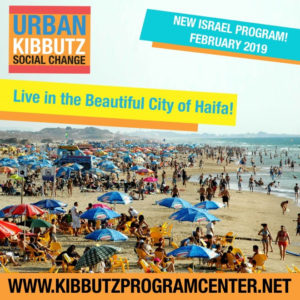by Zach Pekarsky
Rosh haShana is known by many different names, each reflecting different aspects of its history, meaning, and traditions. I’d like to take the time to reflect briefly on many of them.
by Zach Pekarsky
Rosh haShana is known by many different names, each reflecting different aspects of its history, meaning, and traditions. I’d like to take the time to reflect briefly on many of them.
by Jeremy Oziel
Symbols are a huge part of any Jewish holiday. Symbols are what remind us why a holiday is important and why we choose to celebrate it. Symbols help us to find meaning in our practice and belief. They can also inform how we celebrate different holidays. In many cases, symbols from the holidays remind us of the time we spend with our families. On a simple level, symbols are also a very practical way to pass down traditions. Children learn easily through symbols, especially through those that are food related. These are the ones I like the most. For instance, most of us can remember when we learned that Rosh haShana was about turning the page on the old year and looking forward to a sweet new one — through eating apples and honey. You may not have even been old enough to understand why there was another new year that came on January 1st, but you associated the beginning of school and the high holidays with the taste of apples and honey.
by David Meyer
Why will I fast on Yom Kippur this year? To fast or not to fast is an annual game time decision. When I choose to fast or attend services, it is on the grounds that those are, simply put, the activities Jews should be doing on Yom Kippur. Some years I even break the fast early on the grounds that I’ve sufficiently satisfied my desire to engage with Jewish traditions and customs —the lived experience of being Jewish. Other years, I am inspired by my friends and family to persist until the end of Ne’ilah. I’ve always made fasting a decision into which I put serious thought and consideration, but my thoughts have always been about peoplehood rather than spirituality. I would not be surprised if other Habonim Dror members and alumni have felt similarly.
by Zoey Green
The sounding of the shofar is a powerful symbol that has taken on new meanings each year I’ve heard it. When I was young, it was a challenge: when will your lungs grow strong enough to turn the nebulous gas you breathe into crisp, concentrated noise? When I was bat-mitzvah aged, it was a test: do you know the name and pattern of each blast and what each meant to the generations before you? Then somewhere along the way, I questioned tradition, wondering whether I liked my New Year to be celebrated with silence or with sound and why was everyone so willing to put their mouth on the same old ram’s horn anyway? As I surrounded myself with the quirky energy that emanates from a room full of Habos, I discovered meaning in Judaism through its continuous demand that I seek to change the world for the better. With that realization, the dynamic sounds of the shofar came to signify solidarity and the importance of the community standing with every individual who is defiant enough to embrace tradition and make it relevant again today.
by Sara Zebovitz
One of the most repeated prayers in the Rosh haShana and Yom Kippur services – and the ten days in between – is one of repentance. It’s called the Ashamnu (literally, “we have been guilty”), the prayer of confession. It is written as an acrostic, a type of poem common in Jewish prayer. The Ashamnu is said silently during the Amidah prayer, and aloud afterwards. The unique thing about this prayer is that it is not a personal repentance; all of the words are in the first person, plural, and past tense. We say, “אשמנו, בגדנו, גזלנו…” – “we have incurred guilt, we have betrayed, we have stolen…” Why is this prayer recited in this tense, and why are we required to atone for things we have not done? We may have not stolen, lied, committed adultery, or acted violently, but there are others in our communities who have. By reciting this prayer of collective confession, we are taking responsibility over our wider community and taking it upon ourselves to repent for those who have not.
Program Dates: December 25-30, 2014
Location: PEEC Pocono Environmental Education Center, Dingmans Ferry, PA
Important Deadlines:
Check them out HERE!
Ameinu, in cooperation with Dror Israel, the largest urban kibbutz movement in Israel, is launching a new Israel program called Urban Kibbutz Social Change. The first cohort of the five month program will begin in September, 2019 and is recognized by Masa Israel Journey. Participants will live communally in Haifa, volunteer in a range of social action settings alongside their Israeli counterparts, study Hebrew and tour around Israel.
Program and registration information available at: www.kibbutzprogramcenter.net
Or contact: Miki Golod, National Program Director at 212-366-1194 and mail@kibbutzprogramcenter.org

Tisha B’av, תשעה באב, the summer holy day commemorating Destruction and Renewal, challenges us as educators, Jews, and human beings every year. We hope these resources can aid you in your personal and communal observance of this day. Especially this summer, reflecting on this chag and current events, we are faced with its relevance. Conflict and injustice surround us. We must continue to learn, hope, and find ways to join as a Jewish people and as humankind to combat these recurring tragedies in search for peace and equality. Click here for the Tisha B’av 5774 Resources.